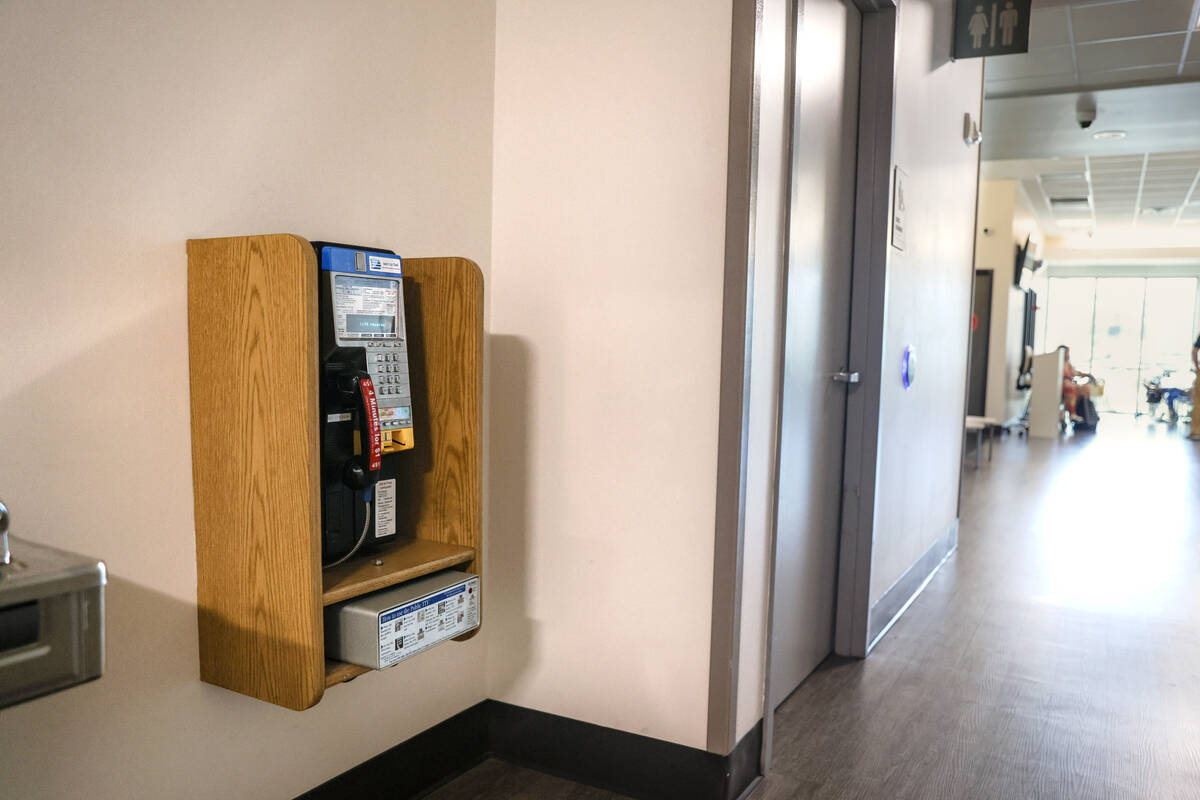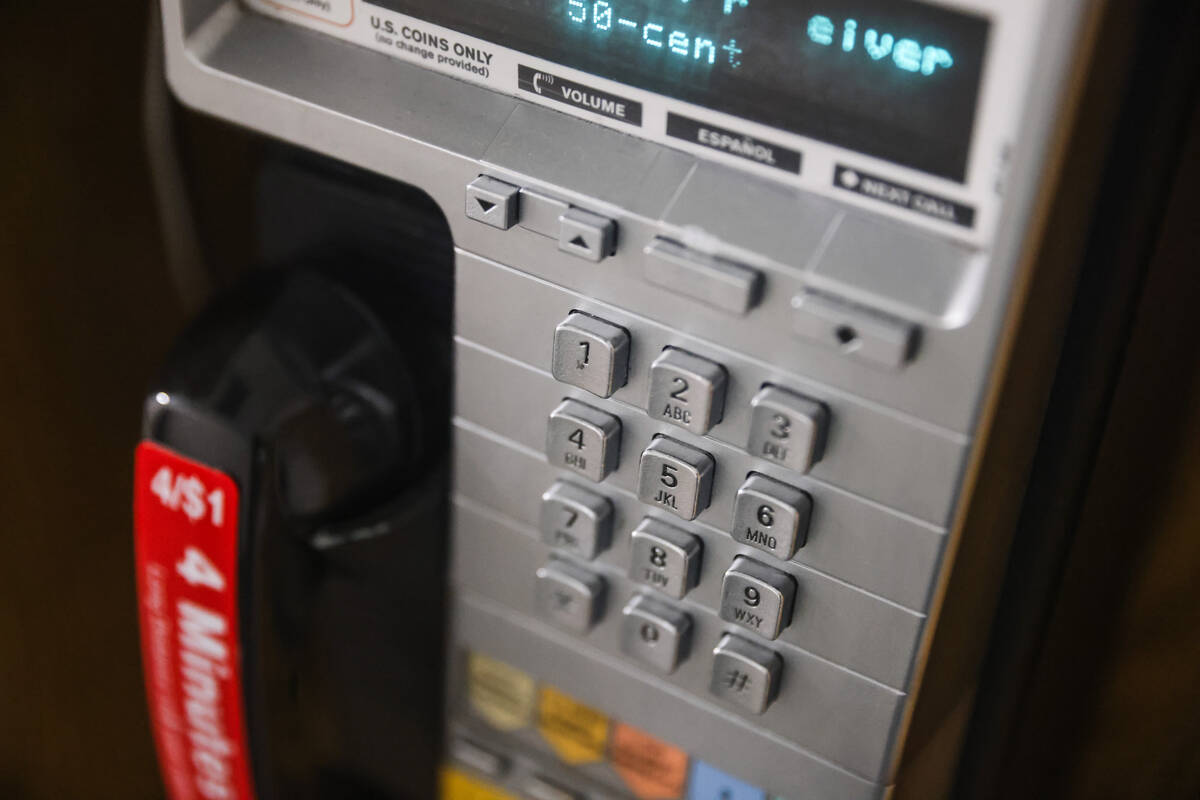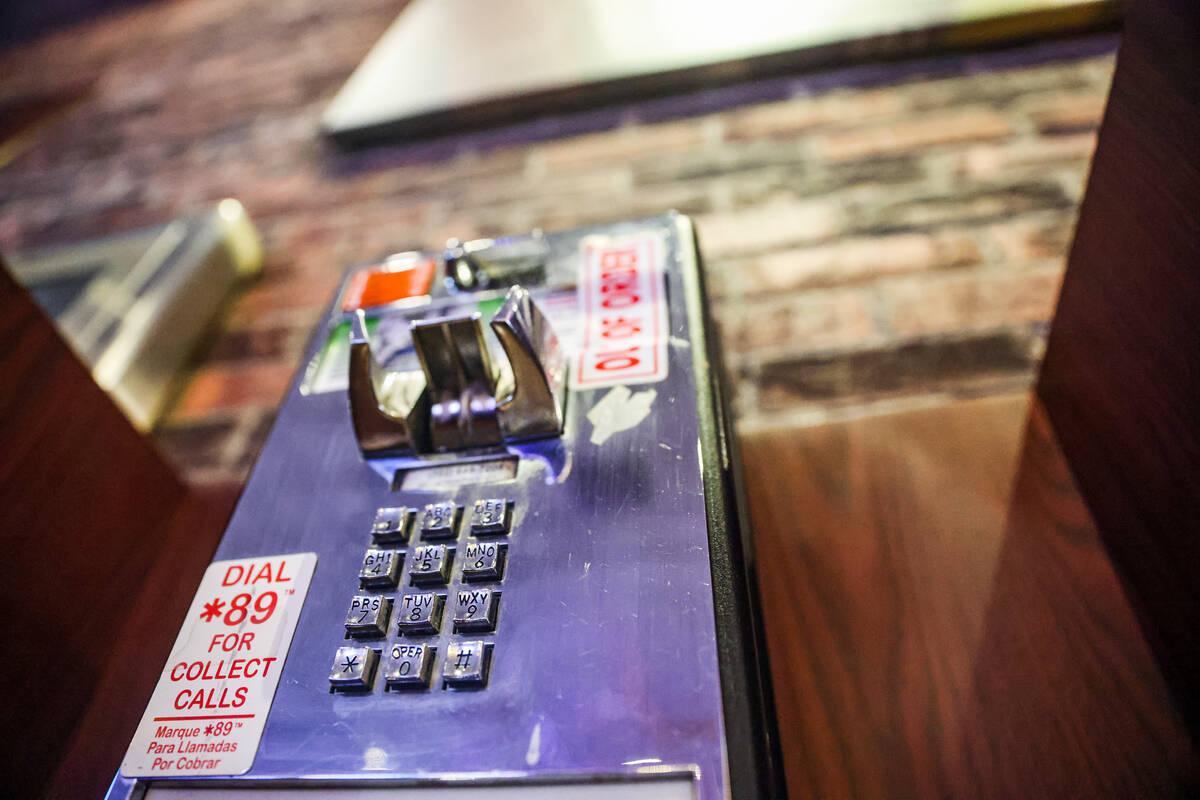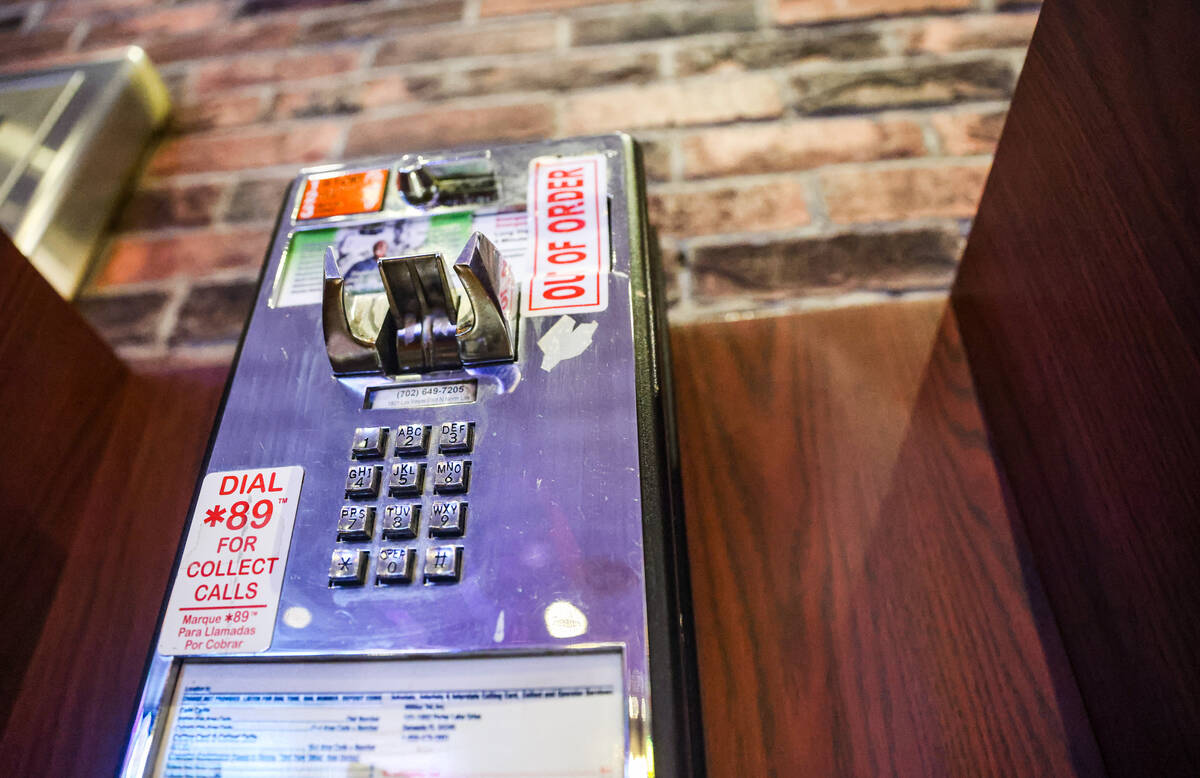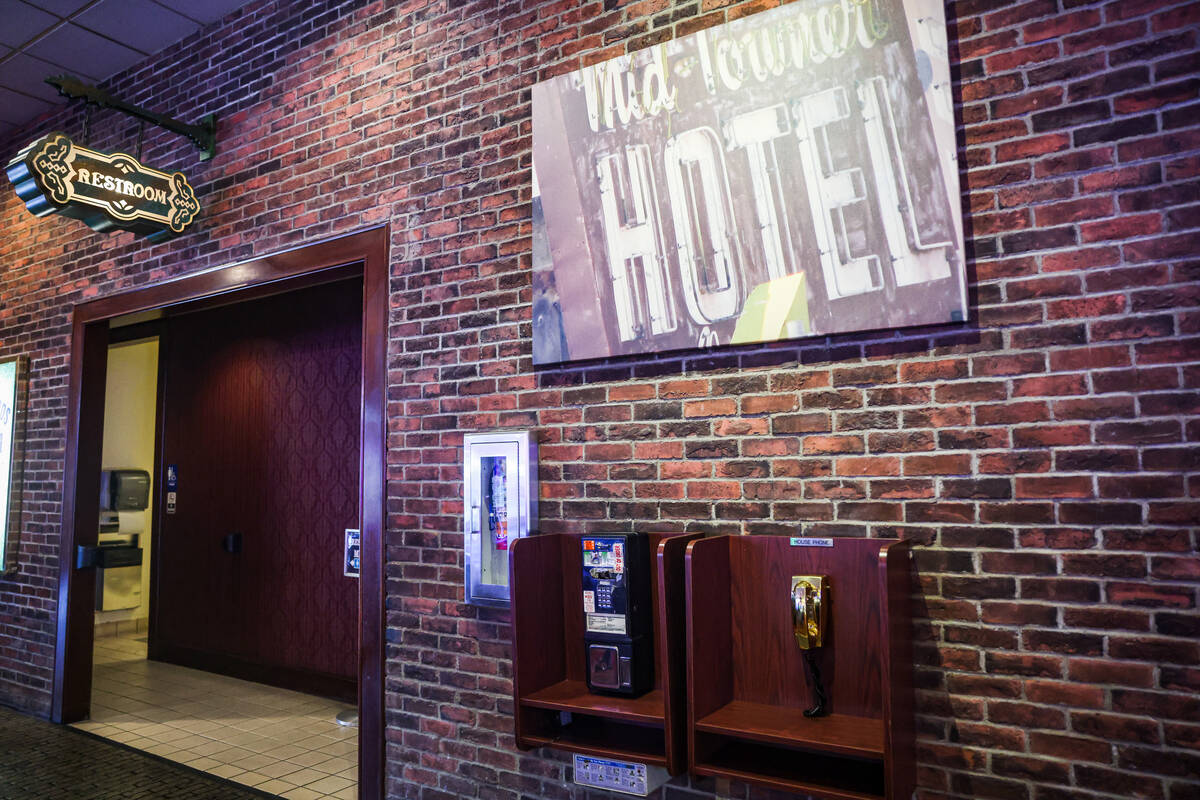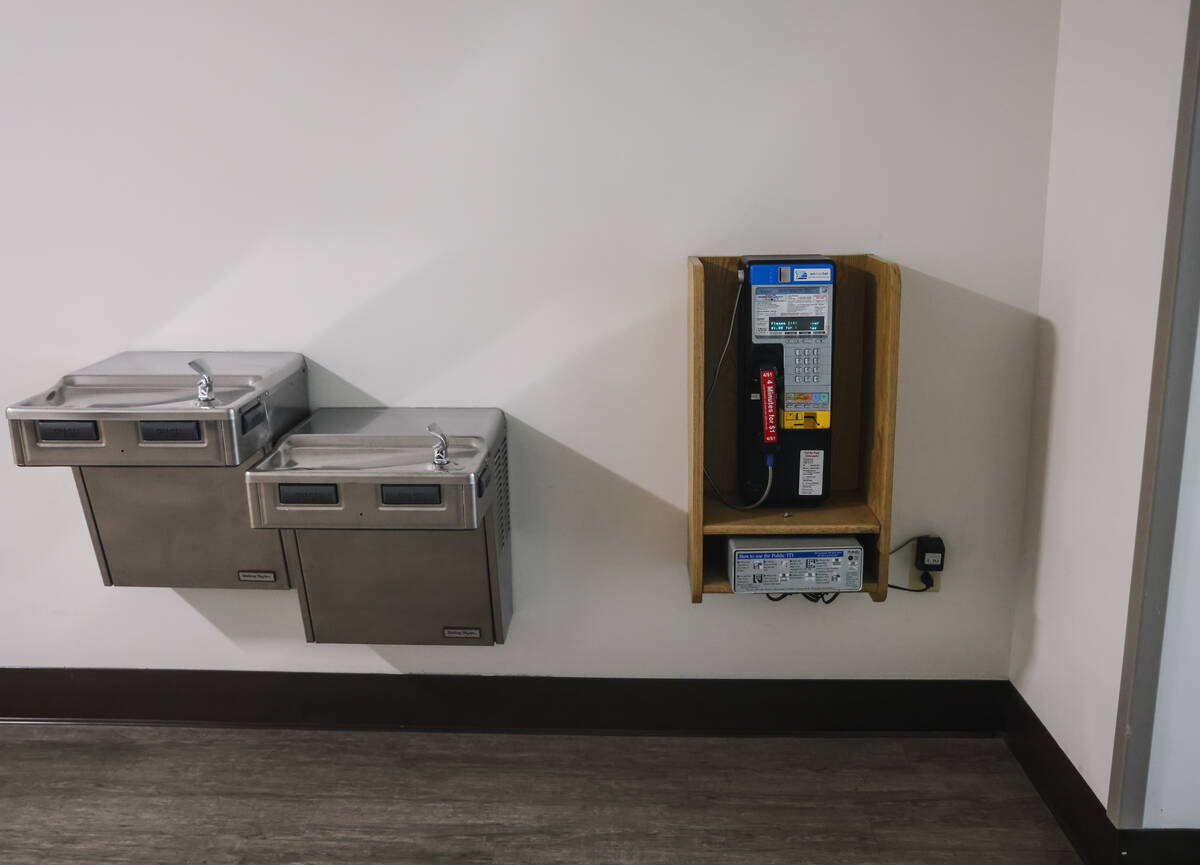Pay phones were once everywhere, but now just a few are left in Las Vegas
They were once on street corners, at bus stops, in convenience stores, courthouses and casinos.
In the pre-cellphone era, everyone from executives to children to criminals used them.
But the golden age of the pay phone ended many years ago as cellphones took hold, becoming ubiquitous and affordable.
Today, few remain and even fewer are in use. A recent Las Vegas Review-Journal search for pay phones in the Las Vegas area found five: one at Centennial Hills Hospital, another at the Clark County detention center, two at Jerry’s Nugget and one on display at the Mob Museum.
Early history
The first time the phrase “pay phone” appeared in the Review-Journal, at least according to the digitally searchable archives, was February 12, 1931.
The story was a brief about a pay phone stolen by thieves “evidently bent upon taking from it whatever money there might be in the machine.” It ran under a photo of a remodeled gas station and next to an article about a peddler of a “narcotic weed” called “marihuana.”
The pay phone’s history stretches back to 1889, when the first one was installed on a corner in Hartford, Connecticut after being invented by William Gray.
Ron Knappen, who wrote a book about pay phone history and owns a Wisconsin-based company called Phoneco that sells pay phones to customers like a prop company and a museum, said early pay phones were bulky wooden machines called “pay stations.” In rural areas, people might have to turn a crank to contact the operator.
A call cost a nickel in the 1910s and 20s, he said, increased to a dime in about 1940 and eventually jumped to a quarter.
The survivors
At Centennial Hills Hospital, there’s still a pay phone near the emergency department. A four minute call costs $1, which one can pay with coins or a credit card.
Hospital spokeswoman Gretchen Papez said its intended users include people who don’t have cell phones or whose phone batteries have died. The phone is owned by WiMacTel, which didn’t respond to requests for comment.
Officer Robert Wicks, a Metropolitan Police Department spokesperson, said the Clark County detention center has a nonworking pay phone in the booking area.
Next to the restrooms at Jerry’s Nugget Casino in North Las Vegas, there’s a pay phone that’s missing its receiver and has an out-of-order sticker covering part of the coin slot. A second pay phone in an entryway appears to be in better shape, but no longer has a dial tone. A WiMacTel label advertises local calls at a rate of 50 cents for 15 minutes.
Martha Diaz, a casino manager, can remember when people made calls on the phones frequently, but said she hasn’t seen someone use them in about eight or nine years.
But at the Mob Museum, a pay phone is still a popular attraction.
The museum has a phone booth that was once in the Four Deuces, the Chicago headquarters of Al Capone, said Claire White, the museum’s director of education. The museum acquired it from a collector in 2019 for an amount she said she could not disclose. The booth contains a 1920s payphone, but not the original one.
“There’s always been a connection between payphones and organized crime,” White said. Using a pay phone was a way to avoid wiretapping, she said.
Most of the museum’s artifacts are behind glass, but visitors are allowed to get in the booth and open and close the door.
“It’s definitely one of the most unique artifacts we have on display,” she said.
It’s also one of the museum’s most popular sites for photos.
Big business
Before they were relics of the pre-digital age, pay phones were lucrative.
“They made obscene amounts of money and then all of a sudden, they didn’t,” said Las Vegas attorney Robert Bolick, who represented a pay phone company called Pay Phones of Nevada.
Gregory Balelo, who is still listed as an officer of a company called Interwest Payphone in state records, said his small company once had about 150 to 200 pay phones, mostly in indoor locations like casinos, taverns and convenience stores. Interwest was incorporated in 1987.
Most of its income came from casinos, he said, but business was also good in the employee areas of hotels and in sportsbooks. Long distance calls were lucrative too.
The business began declining around 2000 as cellphones became cheaper and more reliable. He got rid of his last pay phone in about 2008 and thinks it was probably at the South Point.
“It was part of my life for a long time and it was very good to me,” Balelo said of the pay phone business.
And pay phones can still inspire nostalgia.
Posters on Las Vegas Reddit threads have attempted to track down pay phones and share sitings. Some of the suggestions for where a person might find pay phones are tongue-in-cheek: “in jail” or “Back in the 1990s.”
Balelo said he still has some pay phones that he hasn’t scrapped and recently found some handsets in storage.
“I couldn’t bring myself to throw them away,” he said.
Contact Noble Brigham at nbrigham@reviewjournal.com, especially if you know of a pay phone we missed. Follow @BrighamNoble on X.



